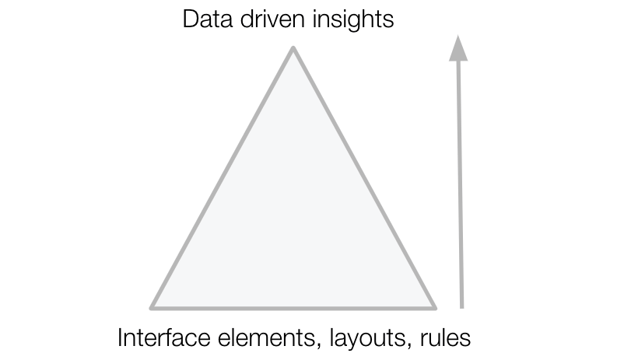Digital product development is not a siloed activity. Success comes from the integration of designers and engineers, working hand-in-hand with the enterprise stakeholders to deliver real value through products which answer the needs of both business and customers.
Everyone talks up the “start-up” mentality which engenders fast to market creative and technical solutions to business problems (some of which we didn’t even realise we had) expressed through the agile deployment of new technologies. This approach is relatively easy to realise in small innovation teams or startups. It’s much more challenging in large enterprise situations where organisational hierarchies are rigid, where existing legacy technologies are an encumbrance, and where existing data sets are multifarious and siloed.
Digital transformation in the enterprise involves multiple projects, each with their own technology and design challenges, each with their own product owner and each with their own requirements for success. Across these projects there are multiple teams, multiple suppliers, and multiple project owners. Each project runs independently, with their own budgets, timelines and KPIs.
Twenty years ago (and for some even more recently) design was an afterthought in the development of a digital product. “Make it pretty” said the product owner to the designer at the end of the product build! And still, often Business doesn’t care about design thinking. Business cares about business outcomes.
But on a macro level - the overall business level - they are inextricably linked. Digital delivery is exponentially harder as the size of the organisation grows. Building digital products is ultimately about building better connections, with users and internally - not least sending signals across the business that rapid change is possible. And for that design thinking and structures in which design experimentation can take place are absolutely essential.
To build a product that delivers business outcomes, it needs also to deliver for the end user. And to do that will necessarily involve best in class design and user experience.
Today, a lot of innovation and design-thinking focuses on project level efficiency. But alongside this is a critical need for macro-level solutions which deliver efficiency to the projects below them. Solutions which enable higher quality, cost effective and faster digital transformation.
These solutions will also involve ways in which experimentation and research/ data learnings can be brought together to deliver excellence. Enabling a cross-business framework and language to empower that is now a given.
4xincrease in revenue |
5xincrease in cost savings |
6xincrease in time to market |
Impact of implementing design systems and tools - Source
From pixels-on-a-screen to data-driven-design
The key to moving forwards in this environment is to build the underlying foundations that enable design, technology and product owners across the business to work effectively together.
Your ultimate goal should be to move from thinking of design as pixels-on-a-screen to employing data-driven-design. The starting point is to spend less time thinking about look and feel and more time running experiments to test business hypotheses.
 In a nod to Maslow, the foundational elements of your enterprise digital roll-out is a Design System which codifies a core, consistent set of rules for your digital products. It is an agreed set of colours and styles, of UI (user interface) layouts, of reusable components.
In a nod to Maslow, the foundational elements of your enterprise digital roll-out is a Design System which codifies a core, consistent set of rules for your digital products. It is an agreed set of colours and styles, of UI (user interface) layouts, of reusable components.
Alongside this should live a systematised means of experimentation which empowers designers to use the system as a framework and tool box rather than simply a dictate.
It's important that while the business can see clear commercial benefits from “standardisation”, that standardisation is in itself not the goal. The aim must be to delight users and to ensure speed and efficiency. The mantra must also always be to “test and learn”. The framework in which that “extermination” takes place needs to be within strict boundaries with criteria set for measured learnings. Getting rid of the constant need for ‘from the ground up’ design should fast track that process.
The design system should live as code, easily accessed by internal and external teams, enabling them to rapidly prototype and build, to bring new products to market quickly and deliver internal tools which enable your organisation and empower your people.
Companies achieve consistency across all products, save time and budget across the board, and drive teams to deliver more strategically valuable work – leveraging data into their thinking and running experiments which will increase likelihood of adoption, engagement and retention.
20th century businesses realised that they could gain competitive advantage by investing heavily in their brand, through brand guidelines and regular (expensive) iterations. 21st century businesses who invest in formalised digital design systems will reap even greater benefits as they learn, retain and grow… and realise it's no longer about “making it look pretty”. The 21st Century customer has much higher expectations.











